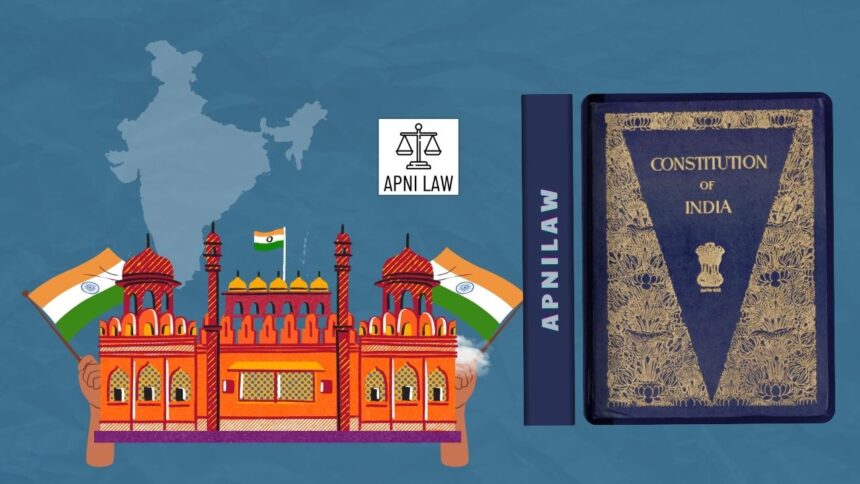Introduction
Bicameralism in Indian states refers to a legislative structure where the state legislature consists of two Houses: the Vidhan Sabha (Legislative Assembly) and the Vidhan Parishad (Legislative Council). Only a few states in India follow this system, while most have a unicameral legislature. The Constitution allows the creation or abolition of the Legislative Council under Article 169, giving states flexibility based on political, administrative, and financial realities.
The purpose of bicameralism is to create a more thoughtful legislative process. By adding a second chamber, the Constitution ensures that laws pass through an additional level of scrutiny. Supporters view it as a safeguard for democracy, while critics argue that it slows decision-making and increases costs.
Understanding the advantages and limitations of this system helps in evaluating its relevance in modern governance.
Historical and Constitutional Background
The idea of bicameral legislatures entered Indian governance during the colonial period. The Government of India Act, 1919 introduced bicameralism at the Centre, and the Government of India Act, 1935 extended it to some provinces. The Constituent Assembly debated whether all states should have two Houses. It ultimately decided that the requirement should be optional rather than mandatory.
Accordingly, Articles 168 to 212 deal with the structure and functioning of the state legislature. Article 169 empowers Parliament to create or abolish a Legislative Council on the basis of a resolution from the concerned state. This arrangement ensures democratic flexibility and respects the diverse administrative needs of Indian states.
Purpose of Bicameralism in States
Bicameralism aims to ensure careful law-making. The Upper House acts as a revising body that reviews bills passed by the Vidhan Sabha. Since members of the Legislative Council come from local bodies, teaching communities, graduates, and nominated categories, they bring diverse experiences to the legislature.
The system also ensures continuity. The Vidhan Parishad is a permanent House, and one-third of its members retire every two years. This helps maintain institutional memory even when political changes take place in the Assembly.
Pros of Bicameralism in Indian States
Bicameralism offers several advantages that contribute to better governance and deeper democratic engagement. One important benefit is its ability to act as a check on the Vidhan Sabha. The second chamber prevents the Assembly from rushing through legislation without careful debate. By reviewing and reconsidering bills, the Council adds stability to the legislative process.
Another strength lies in its role as a House of reason and reflection. Members of the Upper House are not under constant electoral pressure, which gives them the freedom to deliberate on issues with greater depth. This improves the quality of debate and reduces the risk of politically driven decisions.
Bicameralism also broadens representation. Since the Council includes teachers, professionals, graduates, local body members, and nominated experts, it brings perspectives that are not always present in the Assembly. This diversity enriches policy formation and ensures that laws reflect the interests of a wider population.
The system further strengthens governance by contributing to continuity in public policy. Because the Council is never dissolved, it provides consistent oversight and long-term guidance. Its permanent nature supports administrative accountability and ensures that governance does not swing drastically with electoral cycles.
The committee system of the Council enhances legislative scrutiny. Bills, budgets, and policies receive detailed examination in committees, which often identify loopholes or areas of improvement. This function improves the overall quality of administration and law-making.
Cons of Bicameralism in Indian States
Although bicameralism has several strengths, it also faces criticism on grounds of efficiency and cost. The most significant criticism is its limited authority. The Council cannot block legislation indefinitely. If it rejects a bill or delays it, the Assembly may pass it again, and the Council must accept it. Critics argue that this weakness reduces its relevance.
Financial considerations also raise concerns. Maintaining a second chamber requires significant resources. For states with limited budgets, the expenses associated with the Council may outweigh its benefits. This has been one of the major arguments for abolishing Legislative Councils in some states.
Some critics also claim that Legislative Councils may become political rehabilitation centres. Parties sometimes use the Upper House to accommodate leaders who lost elections or to reward political loyalty. This perception undermines the institution’s credibility and its intended role as a body of experts and experienced individuals.
Another concern is the delay created in legislation. Although legislative scrutiny is important, excessive delay may hinder governance. When both Houses disagree, the legislative process slows down, making it difficult for governments to implement timely reforms. This has led many states to prefer a unicameral system for faster decision-making.
Finally, the indirect mode of election raises questions about democratic legitimacy. Since a large portion of members are not directly elected by the people, critics argue that the Upper House may not represent public opinion accurately. This challenge continues to shape debates about the necessity of bicameralism in states.
Relevance of Bicameralism Today
The relevance of bicameralism in states depends on how effectively the Council performs its constitutional role. In states with complex administrative structures and diverse populations, a second chamber can improve policy analysis and democratic participation. In states with smaller populations and limited resources, a unicameral system may offer better efficiency.
The debate continues because both systems have legitimate advantages. The Constitution allows states to choose according to their needs. This flexibility reflects India’s commitment to cooperative federalism and adaptive governance.
Conclusion
Bicameralism in Indian states remains an important constitutional option that balances speed with deliberation. Its strengths include broader representation, deeper scrutiny of legislation, and continuity in governance. Its weaknesses lie in limited powers, financial burden, and potential political misuse. Ultimately, the value of bicameralism depends on how responsibly the Legislative Council functions and how effectively it contributes to the legislative process.
States must evaluate their political, economic, and administrative needs before choosing between unicameralism and bicameralism. A well-functioning second chamber can enrich democracy, but only when it stays true to its purpose as a house of reflection, expertise, and balanced governance.
For any specific query call at +91 – 8569843472








